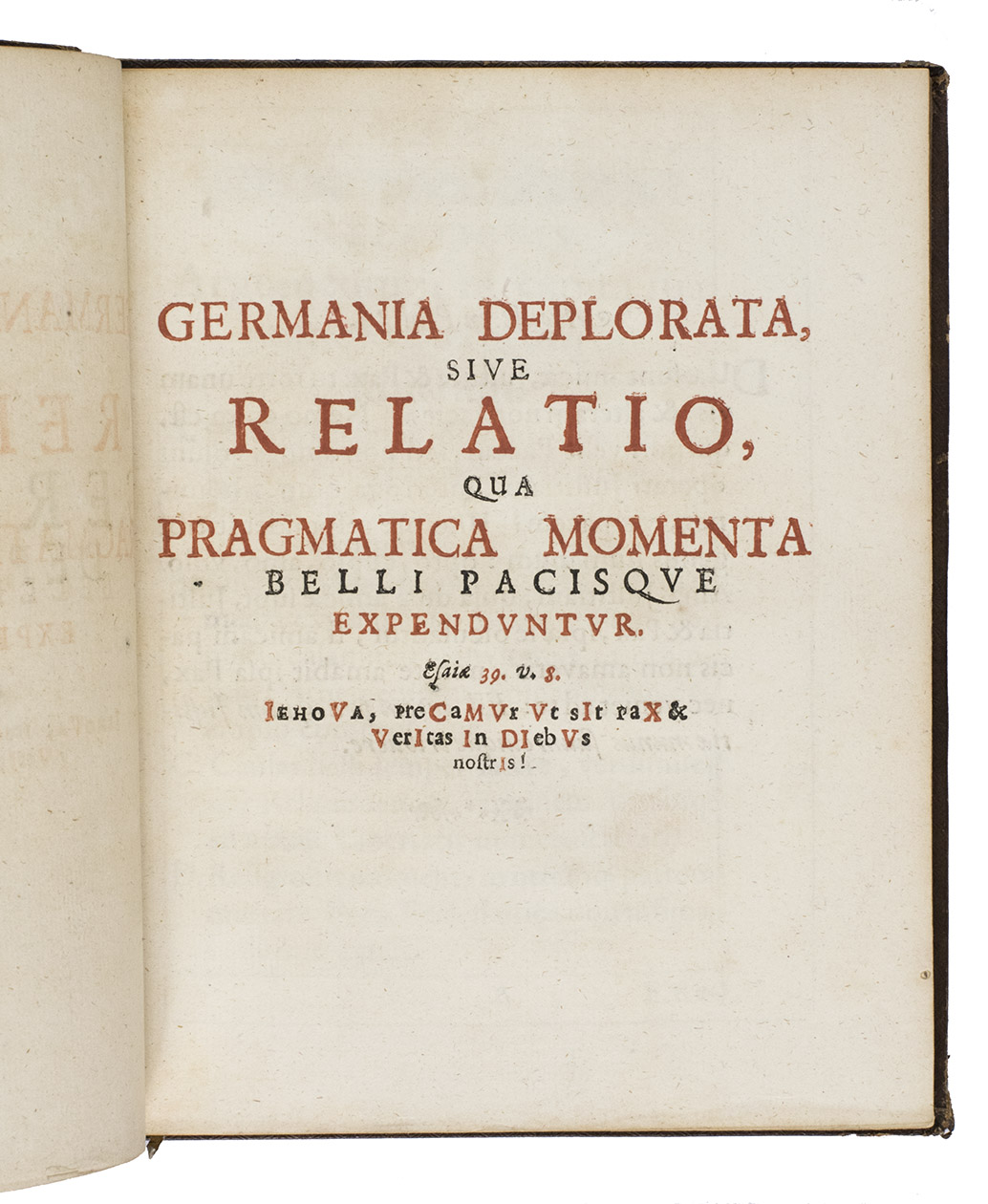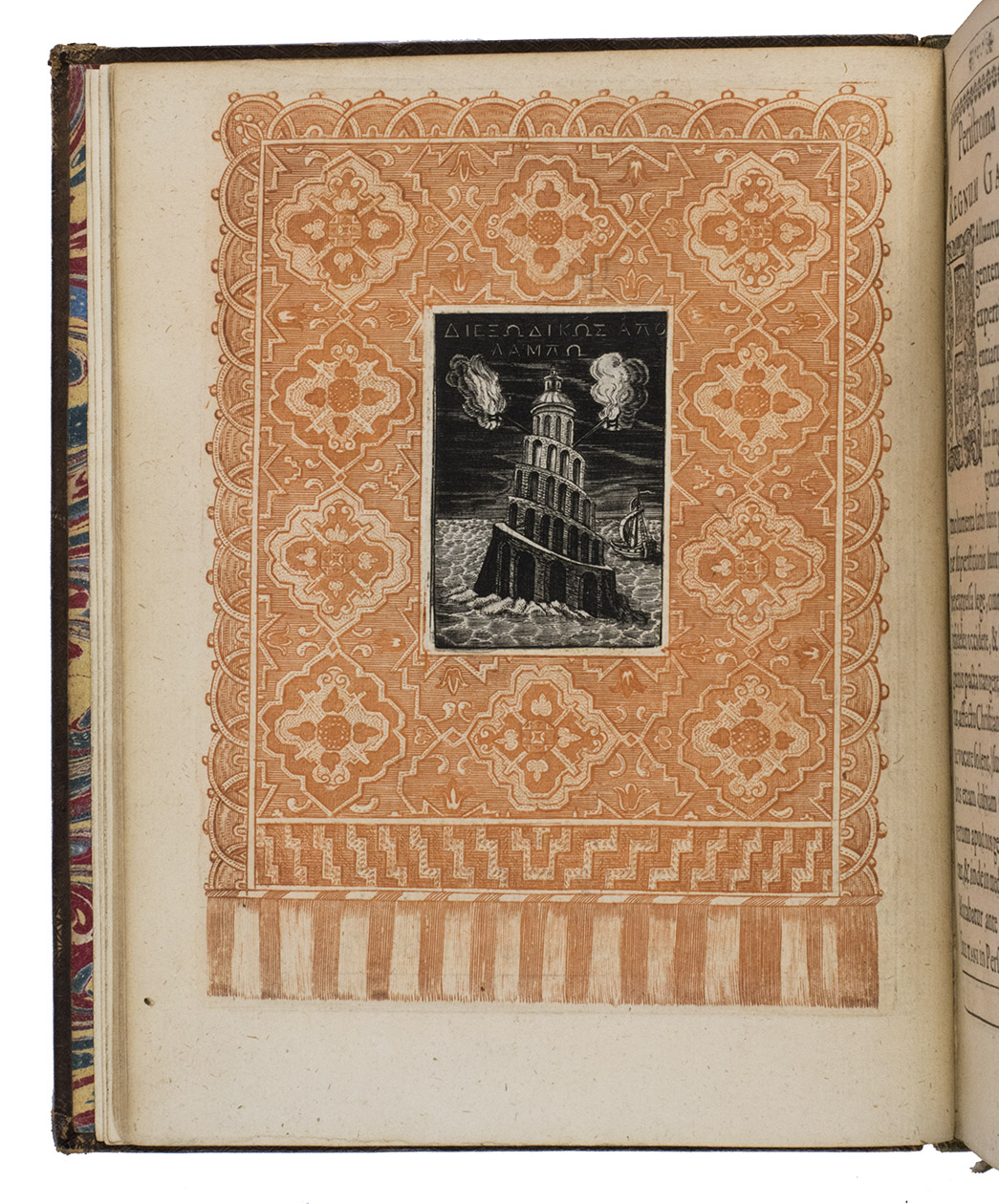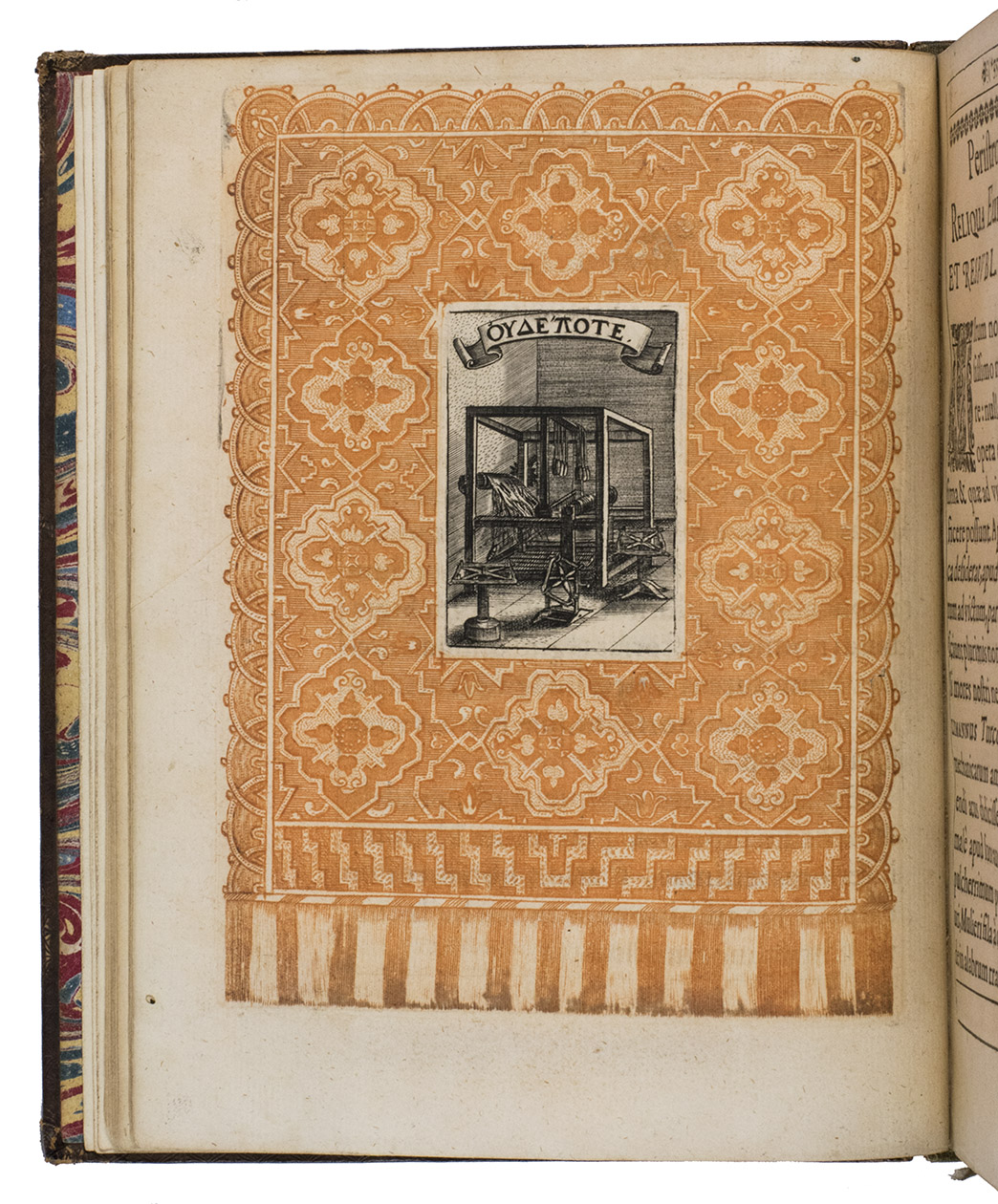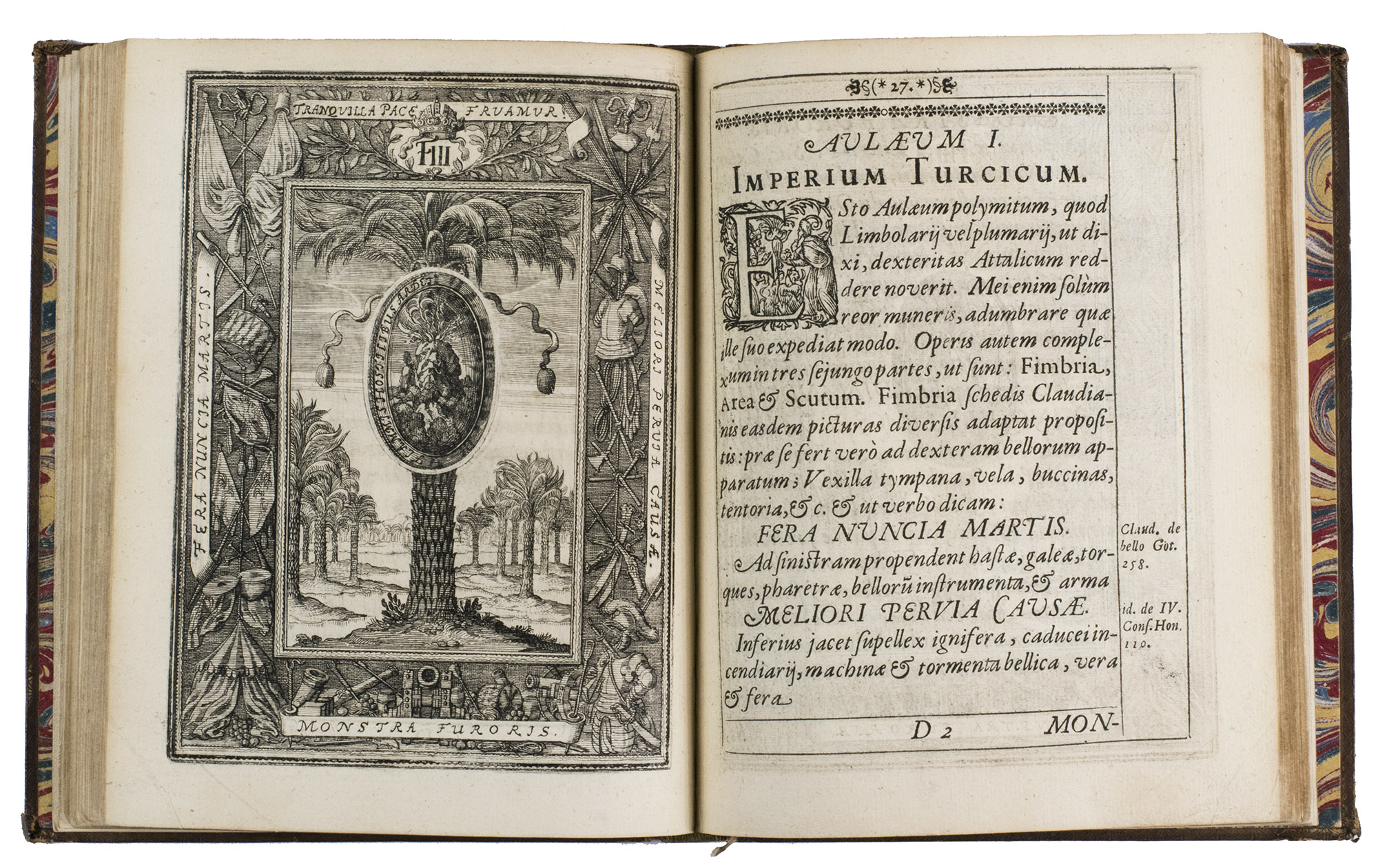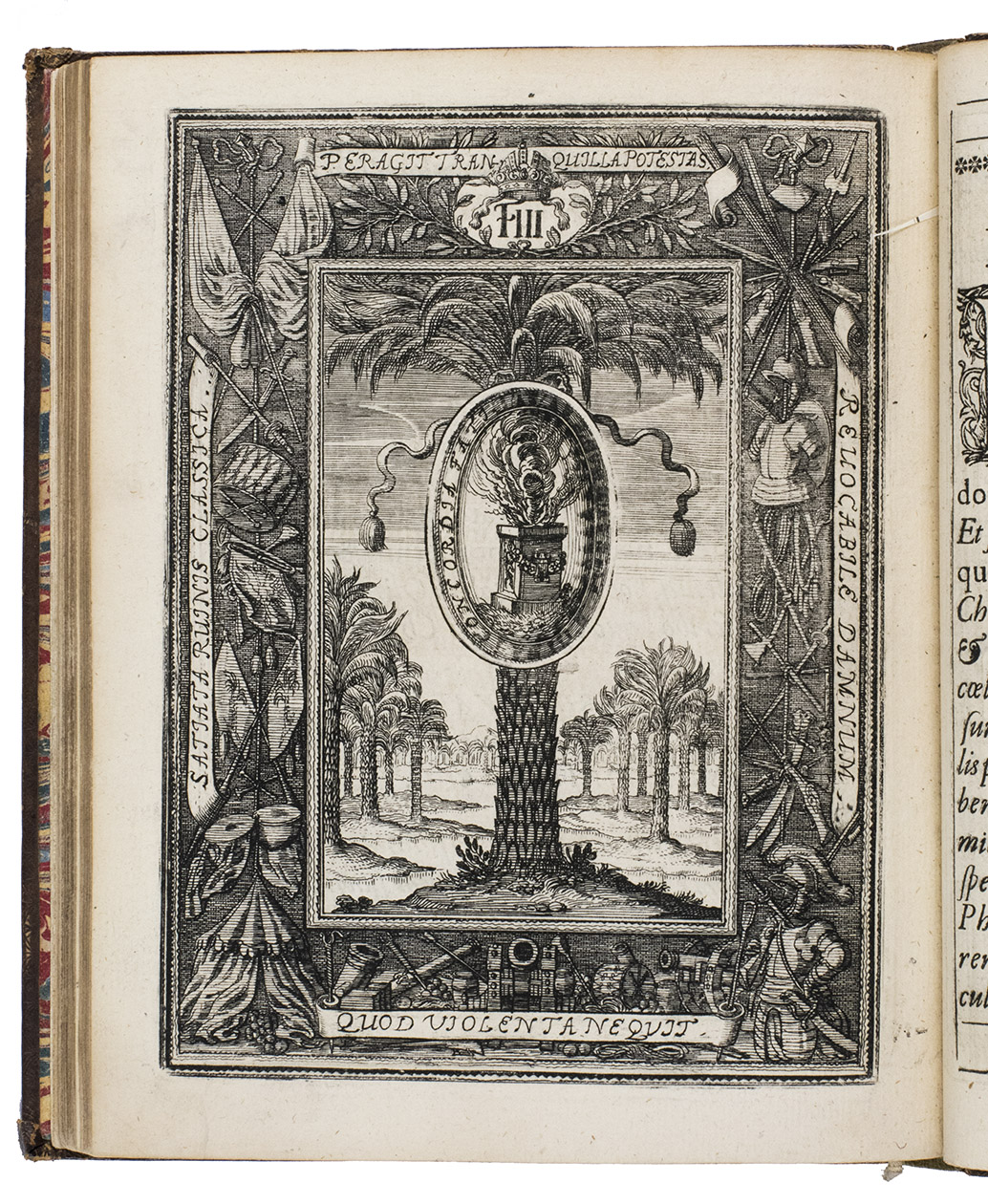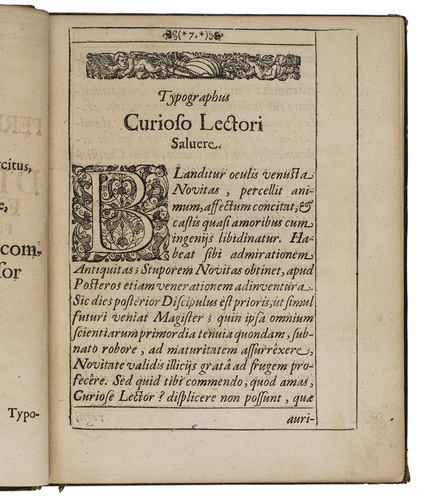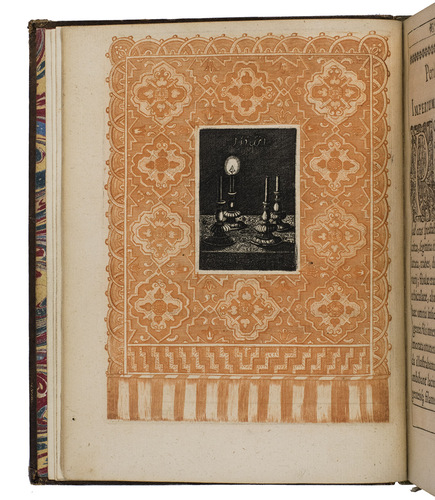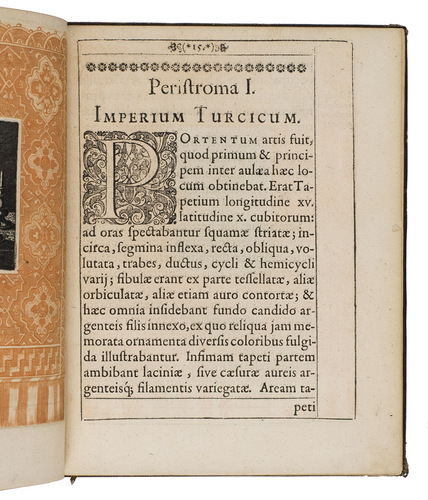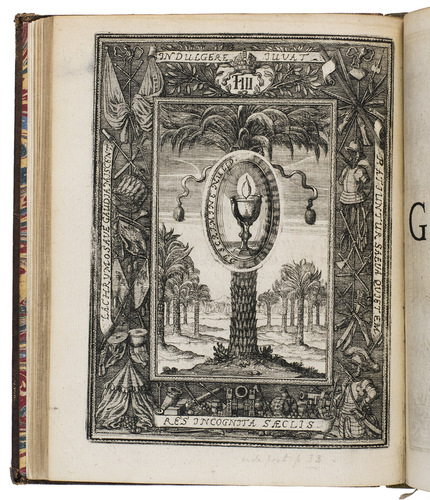[LA HAYE, Jean de].
Peristromata Turcica, sive dissertatio emblematica, praesentem Europae statum ingeniosis coloribus repraesentans.
With:
(2) [HARSDÖRFFER, Georg Philipp]. Germania deplorata, sive relatio, qua pragmatica momenta belli pacisque expenduntur.
(3) [MILAG, Martin]. Aulaea Romana, contra Peristromata Turcica expansa: sive dissertatio emblematica, concordiae Christianae omen repraesentans.
(4) [Anonymous French critic of Cardinal RICHELIEU]. Gallia deplorata, sive relatio, de luctuoso bello, quod rex Christianissimus contra vicinos populos molitur.
[Nürnberg, Wolfgang Endter] (ad 1 with a false colophon: Paris, Toussaint du Bray), [each title-page with a chronogram:] 1641 (ads 1-2, 4) & 1642 (ad 3). 4 editions published together in 1 volume. 4to. With 4 letterpress title-pages in red and black, each with the date in a chronogram, 2 engraved title-plates plus 12 full-page engraved emblematic illustrations, all on integral leaves, each with a small plate nested in a larger plate (7 in the Peristromata with a varying rectangular central plate in dark blue or black and the same outer plate of a Persian carpet in orange; 7 in the Gallia with a varying oval central plate and the same outer plate representing peace with the palm tree in a landscape device of the Fruchtbringende Gesellschaft and a border representing war with military attributes). Further with 5 woodcut head- and tailpieces (plus 8 repeats), 21 "woodcut" decorated initials (5 series, at least some actually metal castings made from woodcuts) plus 8 repeats, and cast vine-leaf ornaments, acorns and other fleurons. Set in roman and italic types with incidental Greek and Hebrew. Light brown calf (ca. 1820?) by Charles Murton (ca. 1795?-ca. 1860?) in London, with his stamp on the front paste-down, sewn on 5 cords, gold-tooled spine with black morocco label, gold thick-thin fillets on boards, gold-tooled board edges, blind-tooled turn-ins, curl-marbled endpapers (white, red, blue, yellow and blue-green in that order), and an orange silk ribbon marker. 46, [1], [1 blank]; [3], [1 blank], 34; 64; 51, [1 blank] pp.
€ 25,000
Rare first and only Latin editions (probably the first and only early editions in any language) of four closely related polemical pamphlets on European policy toward the Ottoman Empire. The publication was instigated by the prominent Nürnberg poet and jurist Georg Philipp Harsdörffer (1607-1658), who somehow got access to the French manuscripts of the pro-Richelieu Peristromata Turcica (Turkish carpets), and the anti-Richelieu Gallia deplorata, translated them into Latin, edited them for publication and added what is believed to be his own anti-French Latin rebuttal of the former, Germania deplorata. On 26 November 1641 he sent all three to the Calvinist Prince Ludwig of Anhalt-Köthen, founding president of the Fruchtbringende Gesellschaft in Weimar, who found the Peristromata Turcica shocking and dangerous, not only for its content but also because its remarkable and "seductive" graphic form. At a spring 1642 meeting of the society Ludwig initiated the writing and production of an emblematic rebuttal, the Aulaea Romana (Roman tapestries). Besides the political importance of these pamphlets as records of differing European attitudes toward the Ottoman Empire, they are remarkable graphic and typographic artefacts, early examples of colour printing and important emblemata.
In 1536 François I had formed an alliance with the Ottoman Emperor Suleiman the Magnificent, and for a century Franco-Ottoman relations swung between extremes. Around 1626 Cardinal Richelieu began to encourage noblemen to strengthen France's economy by expanding its maritime trade in the Middle East, Near East and beyond. But with its great maritime power, the Ottoman Empire was not only a potentially valuable trading partner but also a fierce competitor and even a military threat to Europe's trade in those regions. Richelieu therefore attempted to form a Catholic union with the Holy Roman Empire and others to fight against the Ottomans.
With owners inscription of the lawyer and diplomat Georg Achatz Heher (1601-1667) and bookplate of Robert Hoe (1839-1909), one of the greatest book collectors of all time. With the last quires (E-H) of the Aulaea Romana misbound following the last quire (G) of Gallia. With a small marginal worm hole in the first work and the first leaves of the second, and an occasional small marginal chip or tear, but still in good condition. The binding with cracks in the hinges and some wear at the extremities, but otherwise good. Although these four editions were clearly designed to be published together, only about a dozen complete sets are known to survive, nearly all in Germany, Austria and Poland. Faber de Four 497-500; Praz, pp. 448-449; M. Reinhart, "Georg Philipp Harsdörffer and the emblematic pamphlets of 1641-42 ...", in: Emblemata XX (2013), pp. 313-376 & XXI (2014), pp. 277-375; Stijnman & Savage, p. 46 (ad 1); not in Atabey; Blackmer.
Related Subjects:









